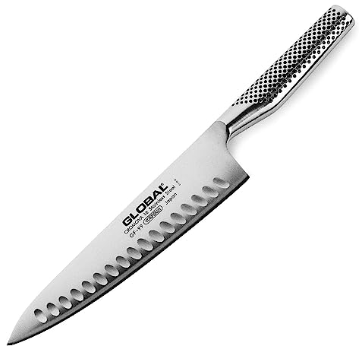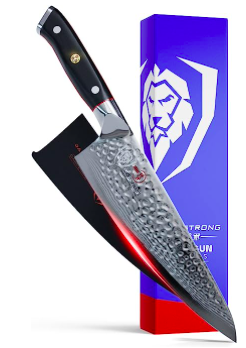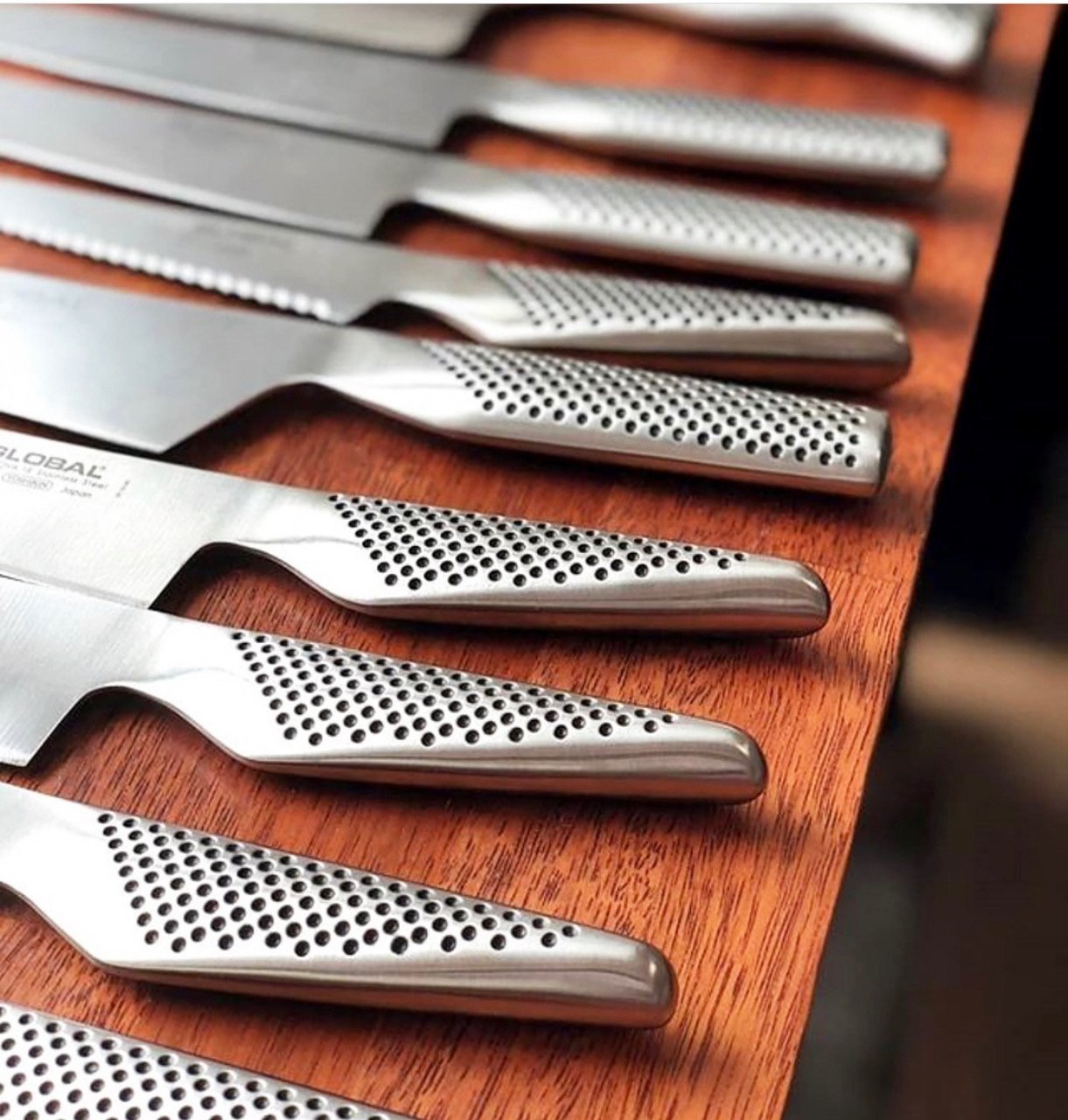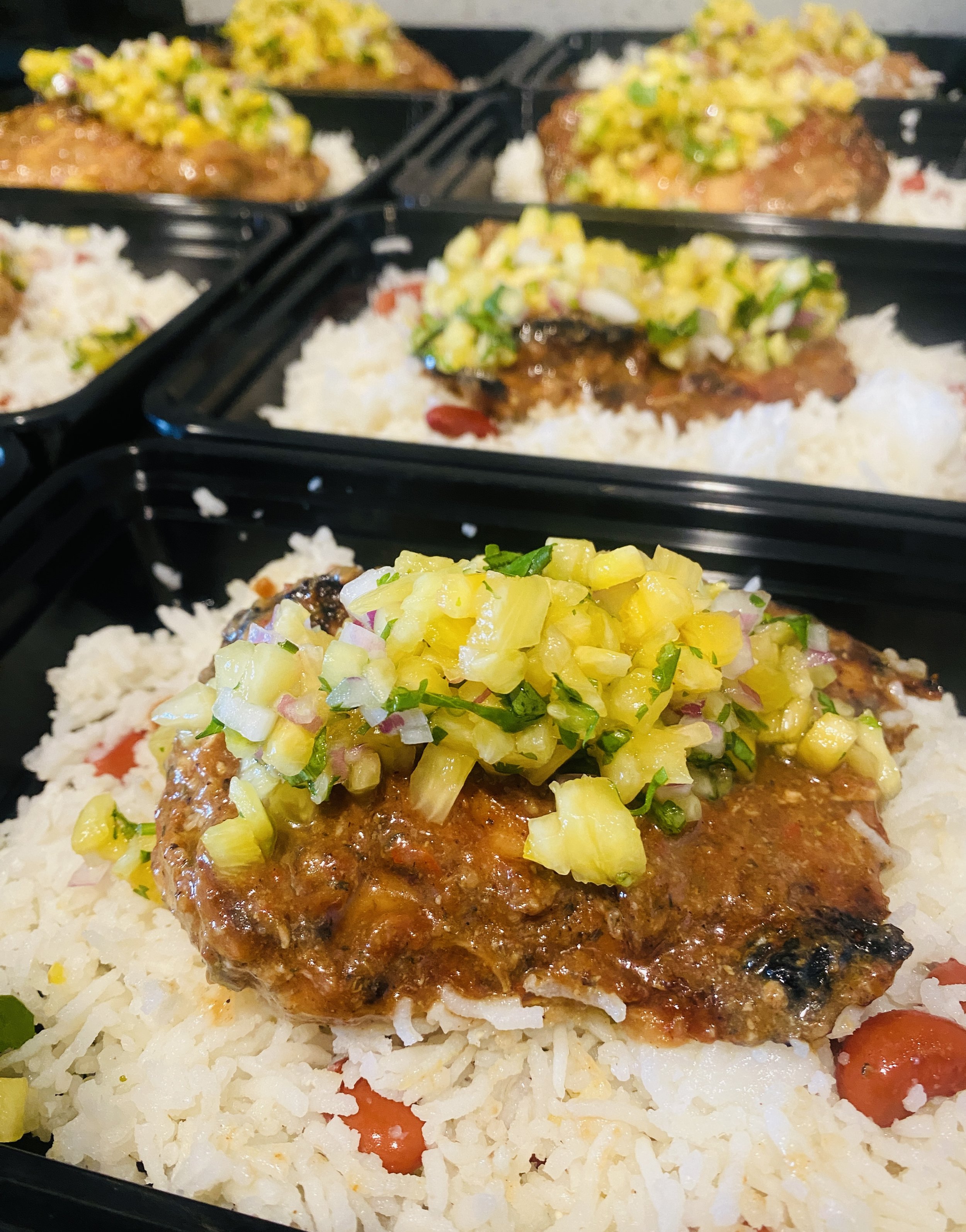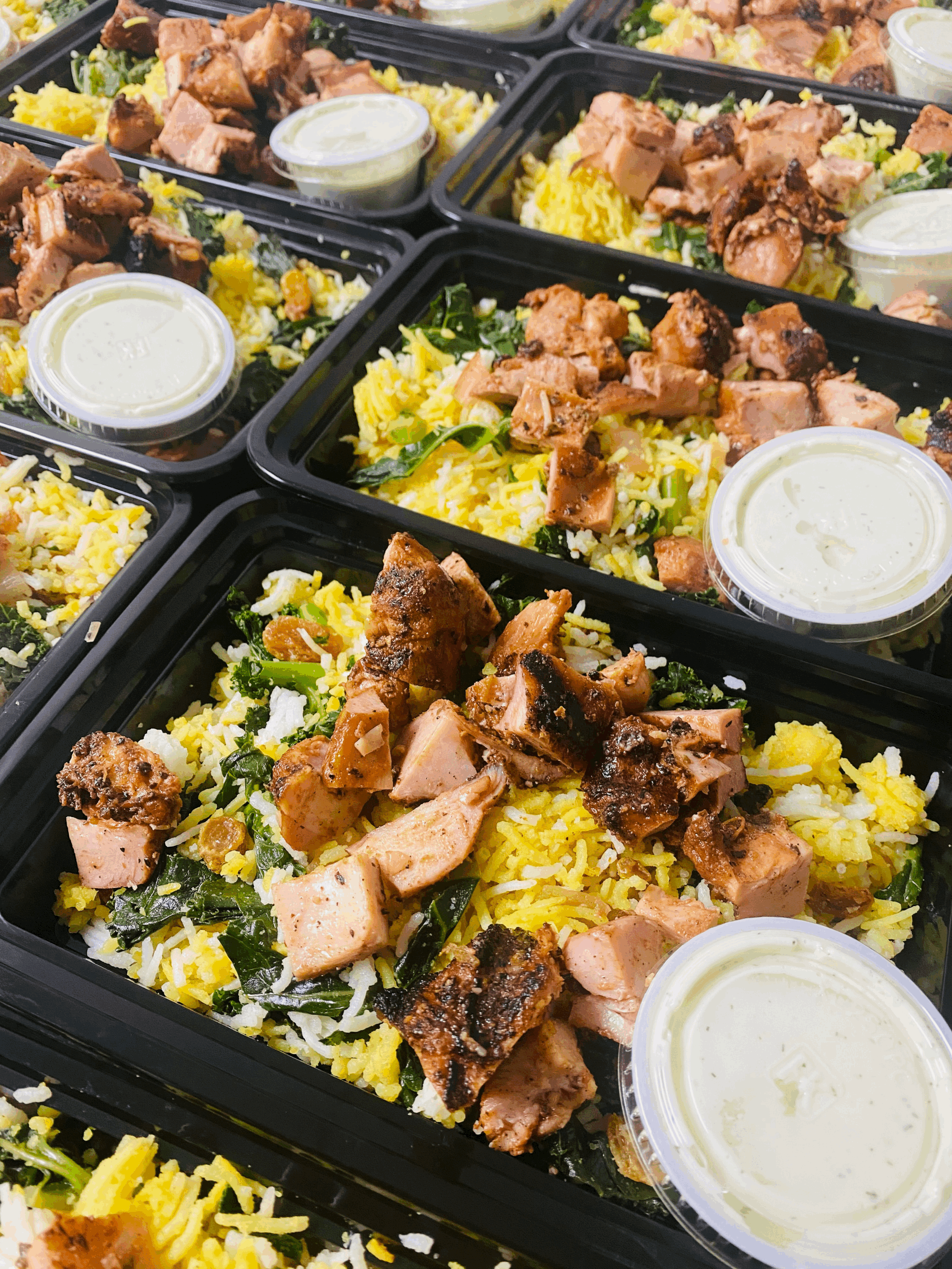10 best chef's knives under $150
A roundup of the most highly-rated chef's knives on Amazon (Number 7 is the one I use)
As a cook, your skills are only as sharp as your knife is.
And since your knife is the most important tool in your kitchen, it's worth an investment if you cook a lot.
Consider buying a bed. The last time I bought one, the salesman reminded me that I spend one-third of my life sleeping on a bed. Was I willing to sacrifice my quality of sleep to save a few bucks?
Of course not.
I invested in a great bed, and I've slept like a rock every night for the last 10 years.
If you love to cook (like I do), you'll get plenty of use out of your knife. I use mine almost daily. And by doing your research before you buy, you'll feel confident choosing the right one for you.
In this article, I'm reviewing some of the most highly-rated chef's knives on Amazon.
I recommend the Mac Knife Chef Series Hollow Edge Chef's Knife, 10-Inch. I've been using it for nine years now, and I love it.
(That’s me using it to cut a jalapeño in this picture.)
For full disclosure, I haven’t used all the knives on this list.
But they’re all highly rated by customers who’ve purchased and used them. And any one of these knives can help take your cooking game to the next level.
This post contains links to products that I am affiliated with.
What to know before you buy a chef's knife
How much should you spend on a chef’s knife?
A chef’s knife is an investment in your kitchen skills.
Not everyone needs a professional knife, so consider how often you'll be using yours. As a general rule, if you use it more than once a week, you can justify spending more than $100 on a knife. Less than once a week? A high-end knife probably isn't what you need.
How to keep a knife sharp
You should hone your knife every day you use it.
How to hone a knife blade: Use a honing steel to straighten the blade's edge. Hold the honing steel vertically with the tip resting on a cutting board or other sturdy surface. Hold the handle of the knife with one hand and place the heel of the blade against the steel at a 15- to 20-degree angle. Swipe the blade down the steel from heel to tip, using light pressure and a consistent angle. Repeat on the other side of the blade.
Got a knife, but no steel? Pick up this all-purpose knife steel on Amazon to keep your blade honed.
Sharpening at home: You should sharpen your knife once the blade has become noticeably less sharp. Use a sharpening stone or electric sharpener to remove small amounts of metal from the blade. This lets you create a new, sharper edge. Follow the manufacturer's instructions for the specific type of sharpener you are using. I recommend using a Japanese water stone.
Professional sharpening: Another option is taking your knife to a professional sharpener. They have the tools and expertise to properly sharpen your knife.
How to wash and store a chef's knife
Protect your knife from rust, corrosion, and chipping.
Use a sponge with hot water and soap to clean your knife. Washing in a dishwasher is not recommended because the blade can be damaged. Dry immediately with a towel to prevent corrosion. Chef's knives should be stored in a plastic knife guard (sheath) to protect the edge and ensure safe handling. Keep your knife (and fingers) safe with this knife sheath.
How to choose a chef's knife
Consider size, weight, style, and material before buying.
Size and weight:
Choosing the right length and weight of a chef's knife depends on the specific task at hand. A short, light knife is ideal for precision tasks, like chopping herbs and vegetables. A long, heavy knife is better for tougher jobs like breaking down a chicken, or slicing through a large roast. In the end, you can improve your cutting by selecting a knife with the appropriate length and weight for you.
Manufacturing process:
Knife manufacturers use either the stamping or forging method. To make a stamped knife, manufacturers cut the blade shape out of a large sheet of metal with a machine. These knives are generally lighter and less expensive.
To make a forged knife, a knife smith will heat a single piece of metal and hammer it into the desired shape. This results in a heavier and more durable knife. Forged knives are generally more prized and expensive.
Style (Japanese vs. European):
Chefs love Japanese knives because they're great for making precise and delicate cuts. Their hard, thin blades are ideal for slicing and chopping vegetables, fruits, and fish. They generally have a straighter blade profile and a flatter edge.
European chef's knives generally have a thicker and heavier blade with a wider angle. The curved profile of the blade allows a smooth rocking motion while chopping. They're often better suited for tougher tasks such as breaking down meat and poultry.
Material (stainless steel, high-carbon steel, ceramic):
Stainless-steel chef's knives resist corrosion and staining well. They need less maintenance than other types of knives, but they may not hold their edge as well.
High-carbon steel chef's knives are easier to sharpen and maintain a sharp edge longer. But without proper care, they're more susceptible to rust and staining.
Ceramic chef's knives have the hardest blades which need the least sharpening. The downside is that their blades are brittle, and not suitable for heavy-duty cutting.
The 10 best chef's knives under $150
(Prices on Amazon listed as of March 2023. Subject to change)5 stars on Amazon
Style: European
Material: Chromova 18 stainless steel
Weight: 14.4 ounces
What users like about it:
Many users find this knife has excellent balance and control, making it suitable for a wide range of cutting tasks. Its lightweight, comfortable handle is helpful when using for extended periods of time. The hollow edge design helps prevent food from sticking to the blade while slicing, allowing for cleaner cuts. The blade is made from high-quality steel that stays sharp for a long time, reducing the need for frequent sharpening.
What they don’t like about it:
This knife blade is thin and flexible, which makes it unsuitable for heavy-duty cutting tasks. The small handle may not be suitable for users with larger hands. A few users have reported that the knife is prone to rusting if not properly cared for and stored, although this can be prevented by keeping the blade clean, dry, and properly stored.
5 stars on Amazon
Style: European (made in Japan)
Material: High-carbon Damascus steel
Weight: 9.6 ounces
What users like about it:
This well-balanced knife has a beautiful design with a Damascus steel pattern on the blade and a comfortable handle. Many users describe it as durable and long-lasting, with some reviewers stating that they have been using it for years without any issues. The knife comes with a lifetime warranty and excellent customer service from Dalstrong.
What users don’t like about it:
A small percentage of reviewers have complained that the knife is too heavy, making it uncomfortable to use for extended periods. A few users have reported that the knife arrived with a damaged or defective blade, although Dalstrong's customer service was able to resolve these issues.
4.5 stars on Amazon
Style: Japanese
Material: Alloy steel
Weight: 8.8 ounces
What users like about it:
Forged from premium steel alloy, this knife is very sharp and maintains its edge well, making it perfect for slicing and chopping. The hollow edge design of the blade prevents food from sticking to it, making it easy to cut through even the thinnest of slices. Customers love how lightweight and balanced it is, making it easy to handle and use for extended periods of time.
What users don’t like about it:
Large pieces of food can take longer to cut with this compact knife compared to a longer knife. Some users have reported that the knife can be difficult to sharpen, which may be a concern for those who prefer to sharpen their knives themselves.
4.5 stars on Amazon
Style: Japanese
Material: Ceramic
Weight: 3 ounces
What users like about it:
This highly-rated ceramic knife is very sharp and holds its edge for a long time, making it easier to maintain. Its super-lightweight design is easy to handle, even for people with small hands or weak grip strength. The ceramic blade is non-reactive, meaning it won't rust or tarnish, and it won't transfer flavors from one food to another. It also comes with a protective sheath to keep the blade safe when not in use.
What users don’t like about it:
Some users found the blade to be too brittle, leading to chips or cracks if the knife is dropped or used improperly. The ceramic blade can be prone to breaking if used to cut hard or frozen foods, or if subjected to excessive force or pressure. A small percentage of users found the handle to be uncomfortable or slippery, particularly when wet.
5 stars on Amazon
Style: European
Material: Stainless steel
Weight: 8.5 ounces
What users like about it:
Users love this knife for its comfortable and balanced grip, allowing for excellent control and precision during use. The blade is made from high-quality stainless steel and stays sharp for a long time, making it a reliable tool in the kitchen. The knife's full tang construction provides additional stability and durability, ensuring that it can withstand heavy use. The Zwilling J.A. Henckels brand is well-respected and known for quality knives.
What users don’t like about it:
A small number of users have reported that the blade may be too thin and flexible for heavy-duty tasks. The knife may require frequent sharpening to maintain its edge, which can be time-consuming. The handle may be too small for individuals with larger hands, leading to discomfort during extended use.
5 stars on Amazon
Style: European
Material: Stainless steel
Weight: 6.4 ounces
What users like about it:
Reviewers love the exceptional sharpness, durability, and balance of this knife. Many users note that the knife was able to cut through tough ingredients with ease and that the blade remained sharp even after extended use. Overall, users like the knife’s durability and construction, saying it feels sturdy and well-made. They also say the knife is well-balanced, and many users noting that it feels comfortable and easy to handle.
What users don’t like about it:
A small number of users report the knife was difficult to sharpen and that it required frequent honing to maintain its edge. A few users mentioned that the knife’s handle was uncomfortable for them, with some stating that it felt too bulky or slippery to use comfortably.
What I like about it:
I highly recommend this knife if you prefer a longer blade. I've used this 10-inch knife at Seasoned Catering for almost a decade. In fact, I’ve sharpened it so many times that it’s only 9 1/2 inches now. The line of hollow marks on the blade prevent food from sticking during use, which lets me knock out my prep work in a flash. It’s lighter than the Henkel and Wüstof knives I’ve used in the past, so I can cut for longer without my hand getting tired. This is the one tool I can't live without in the kitchen,
What I don’t like about it:
Sometimes the 10-inch blade is more knife than I need, and so I’ll switch to a paring knife for smaller jobs. But Mac also makes the same knife in an 8-inch version, and you can get it here. Even though I use it as an all-purpose knife, it’s really a precision knife. I can’t open a coconut with it. I always keep it clean and dry, or else it will rust.
What users like about it:
Although smaller than most chef's knives, users praise its sharp blade that makes slicing and chopping easy. The knife has a comfortable handle that is easy to grip and provides good control over the blade. Many users have found that the knife is well-balanced and feels sturdy in their hand. Customers have the peace of mind knowing that Shun knives comes with a lifetime warranty.
What users don’t like about it:
A small number of users have reported that the blade can become dull quickly, requiring frequent sharpening. The knife is not dishwasher safe, which can be inconvenient for some users.
5 stars on Amazon
Style: Japanese
Material: VG10 hammered Damascus stainless steel
Weight: 8.2 ounces
What users like about it:
The VG10 Damascus steel used in the blade is very sharp and holds its edge well, making it great for slicing vegetables. The traditional straight-edge design is perfect for chopping and mincing vegetables, and the knife is well-balanced and comfortable to use. Many users have praised the knife's durability and ease of maintenance, noting that it can withstand heavy use and is easy to clean.
What users don’t like about it:
A small number of users found the blade to be too thick, making it difficult to make precise cuts on smaller vegetables. A few users have reported issues with rusting or staining on the blade, although this can be prevented by keeping the blade clean, dry, and properly stored.
What users like about it:
Many users find this durable knife to be well-balanced, comfortable to hold, and easy to maneuver. It's reasonably priced, making it accessible to a wider range of consumers. As a bonus, the knife comes with a protective sheath, making it safer to store and transport.
What users don’t like about it:
Some users have reported that the blade rusts easily if not properly cared for. A few users have found the handle to be slippery, making it difficult to grip securely. The knife may require frequent sharpening, especially with heavy use.
Conclusion
You've got plenty of help in your quest to find the perfect knife. Each of these knives have hundreds of reviews, so consider them before making your decision.
Take great care of your knife, and you'll be cooking delicious meals with it for years to come.
Read More
Top Articles


